United States military beret flash
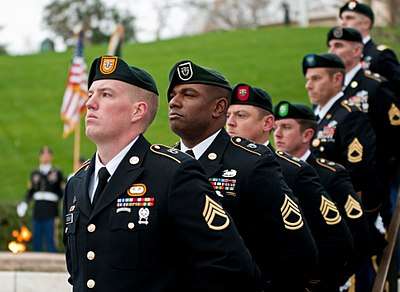
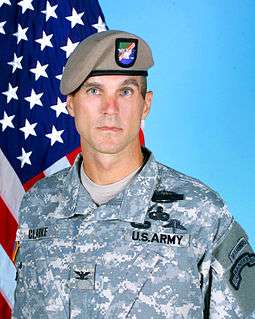
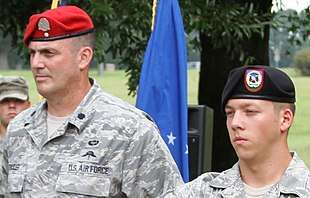
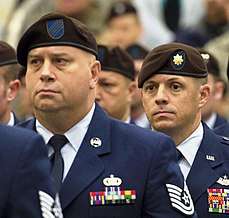
In the United States (US) Army and US Air Force, a beret flash is a shield-shaped embroidered cloth or metallic insignia attached to a stiffener backing of a military beret. The flash attached to the stiffener is worn over the left eye of the wearer with the excess cloth of the beret folded and pulled over the right ear giving it a distinctive shape.[1][2] The embroidered designs of the US Army beret flashes represent the approved distinctive heraldic colors of the unit to which they are assigned[3] while the US Air Force's represent their Air Force specialty code (AFSC)[2] or their assignment to a special unit, such as Combat Aviation Advisor (CAA) squadrons.[4] Joint beret flashes, such as the Multinational Force and Observers and United Nations Peacekeeping Flashes, are worn by all of the US armed forces on unique berets while assigned to a specific multinational mission.[5][6]
With the exception of Joint beret flashes, US Army soldiers and non-commissioned officers (NCOs) attach their unit's distinctive unit insignia (DUI) to the center of their beret's flash while warrant officers and commissioned officers attach their rank insignia.[1] US Air Force commissioned officers who are in the Air Liaison Officer (ALO) carrier field (AFSC 13LX),[7] Security Forces carrier field (AFSC 31PX), or assigned to CAA squadrons do the same while commissioned officers assigned to AFSCs authorized metallic flashes attach a miniature version of their rank insignia centered below their flash.[2] US Air Force airman and NCOs only wear their flash or flash and crest on AFSC or unit specific berets.[2][4]
History
US Army
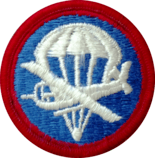

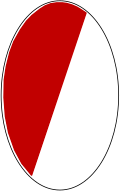
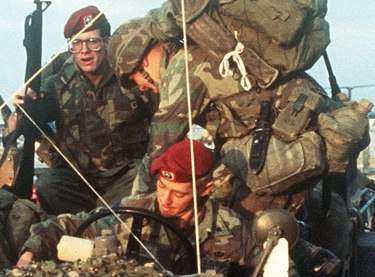
Throughout its history, US Army units have adopted different headgear devices—such as unique color accoutrements, insignias, and flashes—to help distinguish them from other units wearing the same headgear. One example of this started in World War II with the adoption of the airborne insignia which was authorized for wear by military parachutists[8] and glider-born forces on specific assignments and by those assigned to airborne units.[9] The airborne insignia was worn on the left-side front (for enlisted) or right-side front (for officers) of the former US Army service uniform's garrison cap.[8][9] Different variants of the airborne insigna were worn until later in World War II when the parachute and glider formations combined their formation-specific insignias into one circular cloth red, white, and blue, parachute and glider airborne insignia.[10] Although airborne units began to wear the maroon beret as their official headgear, the garrison cap with airborne insignia continued to be authorized for wear until the black beret became the standard US Army headgear in the early 2000s.[9][11][12]
It is not clear when beret flashes began to be used by the US Army. However, US Army films between 1956 and 1962 suggest beret flashes may have been introduced around 1961,[13][14][15] when the green beret was officially authorized for wear by members of the US Army Special Forces.[16][17]
Other beret flashes began to appear in the 1970s when the US Army's armored cavalry regiments in Germany began wearing black berets with maroon and white cloth ovals to the left of the wearer's rank insignia.[16][18] By 1979, the US Army put a stop to the use of berets by conventional forces.[16][17]
In 1980 the US Army reversed its decision for airborne units allowing them to wear the maroon beret;[16][17] soon thereafter unit specific beret flashes began to appear.[19] The design of each airborne unit's beret flash was created and/or approved by the US Army Institute of Heraldry (TIOH)[20] and was based on the design of the unit's background trimming[21]—which made their debut in World War II[22]—or TIOH research into the unit’s heraldry.
In late 2000, when the Chief of Staff of the Army decided to make the black beret the standard headgear of the US Army, GEN Eric Shinseki also decided that all units that did not have a distinctive organizational flash will wear a new universal one.[1][12][20] However, units can request authorization for a distinctive organizational flash, as was done for the US Army's new Security Force Assistance Brigades.[23] According to Pam Reece of TIOH, the universal US Army Flash "is designed to closely replicate the colors of the commander-in-chief of the Continental Army at the time of its victory at Yorktown."[12]
US Air Force

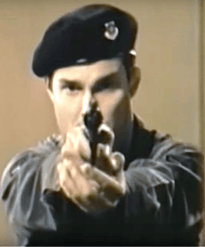

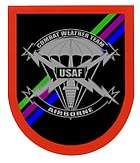
In 1957, the Strategic Air Command's Elite Guard was the first US Air Force unit officially authorized to wear berets. The first beret flash worn on this dark-blue beret was a small metal full-color replica of the Strategic Air Command Patch.[24][25] In 1966/67, the first US Air Force Security Police Beret was issued by the 1041st Security Police Squadron (SPS); the 1041st SPS used a depiction of a falcon on a light blue patch as its beret flash until the unit was disbanded in 1968.[26][27] In February 1976, the US Air Force Uniform Board approved the dark-blue beret as an official uniform item for the US Air Force's police and security forces.[26] The beret flash used on these dark-blue berets was a small metal full-color replica of the unit's major command patch until March 1997 when the heraldry of the 1041st SPS was honored by mandating a new universal beret flash depicting the early SPS falcon over an airfield with the motto "Defensor Fortis" (defenders of the force) embroidered on a scroll at the base of the flash.[26]
In 1966, the US Air Force authorized the wear of the maroon beret by Pararescuemen. Initial wear of the beret followed the trend of the US Army Special Forces who wore their Parachutist Badge over the wearer's left eye acting as the beret's flash.[28] Historical photographs have shown graduates of the US Air Force Pararescue School wearing the Pararescueman Beret Flash on their newly earned berets in a Fall 1975 class photograph;[29] however, it is unclear when the Pararescueman Beret Flash became an official part of the uniform.
Historical photos of Vietnam Era US Air Force Combat Controllers show them wearing black berets that were worn in the same manner as the Pararescuemen and Special Forces berets of the era, with their Parachutist Badge used as the beret's flash.[30] No other information has yet been found as to when the Combat Controller Beret Flash started to be worn on their scarlet beret or when it became an official part of the uniform.
In 1979, US Air Force Tactical Air Control Party (TACP) airmen were given authorization to wear the black beret. In 1984, two TACP airmen submitted a design for a unique beret flash and crest that would be worn on the beret in the same manner as the US Army.[1][16] The US Air Force approved the design and authorized all TACP airman to wear the new flash and crest in 1985.[16] Soon thereafter, ALOs were given authorization to wear the black beret and the TACP Flash (no crest).[2][16]
In 2004, the US Air Force authorized the wear of the pewter-green beret to graduates of the US Air Force Survival, Evasion, Resistance and Escape (SERE) specialist technical school. The beret's flash, also known as the SERE specialist device, is a relatively small polished metal shield embossed with their SERE emblem and motto.[2][31]
Although there is limited information on the US Air Force Special Operations Weather Technician (SOWT) Beret Flash, historical photographs show the use of two unique cloth flashes that were worn on their distinctive gray beret along with a small metal Combat Weather Team Crest.[32][33] Around 2010, the flashes and crest were replaced with a large metal SOWT Flash, similar in design to the current Pararescueman and Combat Controller Flashes.[34]
In 2018, the US Air Force Special Operations Command (AFSOC) authorized the wearing of the brown beret to airman assigned to the 6th and 711th Special Operations Squadrons who specialized as CAAs within the US military. Although not authorized by the US Air Force, these squadrons are authorized to wear the beret while on AFSOC installations. The beret is worn with a US Army style blue and green cloth beret flash but with no unit or AFSC crest.[35] Prior to this, CAAs wore nothing on their uniforms to distinguish them from other airman.
Beret flashes currently in use
Joint beret flashes

United Nations Peacekeeping 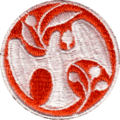
Multinational Force and Observers
US Army

US Army (worn by units without a distinctive organizational flash) 
1st and 2nd Security Force Assistance Brigades
Airborne units

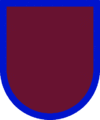

Airborne Procurement Team, Program Executive Office 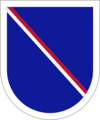

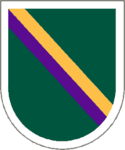
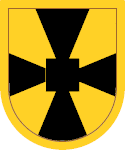
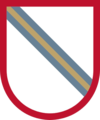
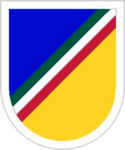

6th Engineer Battalion 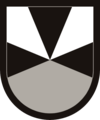

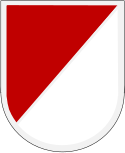
17th Cavalry Regiment's 1st Squadron 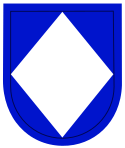

XVIII Airborne Corps Noncommissioned Officer Academy 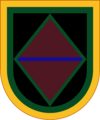
21st Military Police Company 



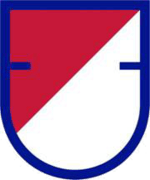
40th Cavalry Regiment's 1st Squadron 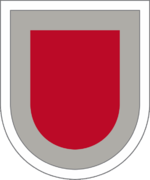

55th Signal Company 
57th Engineer Company 
65th Military Police Company 
73rd Cavalry Regiment's 1st, 3rd, and 5th Squadrons 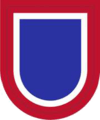
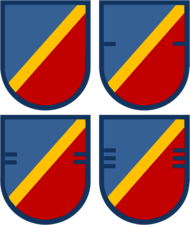
82nd Aviation Regiment, 1st, 2nd, and 3rd Battalions 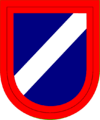
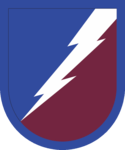

84th Engineer Company 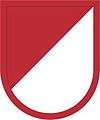
91st Cavalry Regiment's 1st Squadron 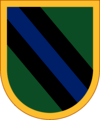
108th Military Police Company 
118th Military Police Company 
122nd Aviation Support Battalion 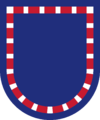
127th Engineer Battalion 
143rd Infantry Regiment's 1st Battalion 
161st Engineer Company 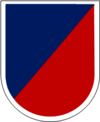
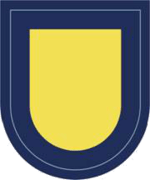
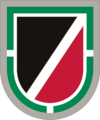

307th Engineer Battalion 
307th Brigade Support Battalion 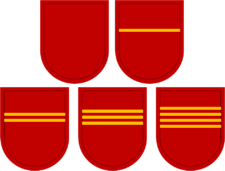
319th Field Artillery Regiment, 1st, 2nd, 3rd, and 4th Battalions 
325th Infantry Regiment, 1st, and 2nd Battalions, 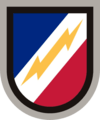
344th Tactical Psychological Operations Company 
345th Tactical Psychological Operations Company 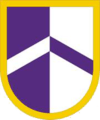
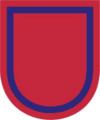
377th Field Artillery Regiment's 2nd Battalion 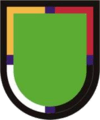
404th Civil Affairs Battalion 
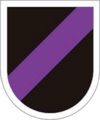
412th Civil Affairs Battalion 
416th Civil Affairs Battalion 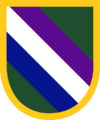
422nd Civil Affairs Battalion 
426th Civil Affairs Battalion 
450th Civil Affairs Battalion 
478th Civil Affairs Battalion 
501st Infantry Regiment's 1st and 2nd Battalions 
503rd Infantry Regiment's 1st and 2nd Battalions 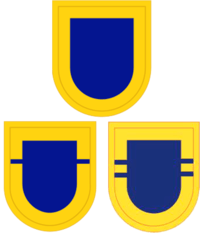
504th Infantry Regiment, 1st, and 2nd Battalions 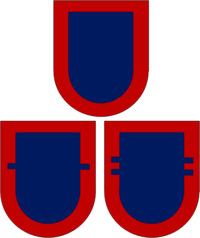
505th Infantry Regiment, 1st, and 2nd Battalions 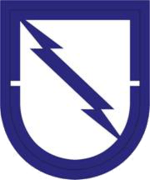
507th Infantry Regiment's 1st Battalion 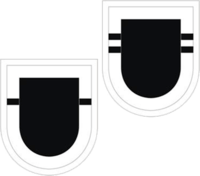
508th Infantry Regiment's 1st and 2nd Battalions 
509th Infantry Regiment's 1st and 3rd Battalions 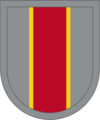
722nd Ordnance Company 
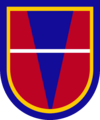
738th Engineer Company 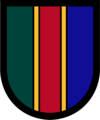
767th Ordnance Company 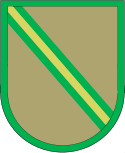
824th Quartermaster Company 
919th Engineer Company 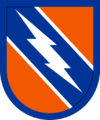
982nd Signal Company
Special operations airborne units
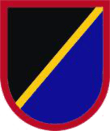
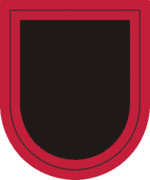

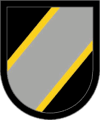
Joint Special Operations Command-Army Element 
Special Forces personnel, assigned to Joint Chiefs of Staff 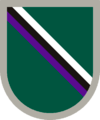
Special Forces personnel in non-special operations units 
Special Forces Warrant Officer Institute 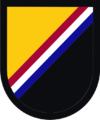
Special Operations Command-Army Element 
Special Operations Command Africa-Army Element 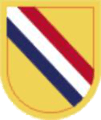
Special Operations Command Central-Army Element 
Special Operations Command Europe-Army Element 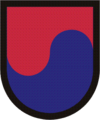
Special Operations Command Korea-Army Element 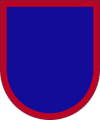
Special Operations Command North-Army Element 
Special Operations Command Pacific-Army Element 
Special Operations Command South-Army Element 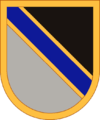
Special Warfare Education Group 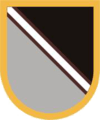
Special Warfare Medical Group 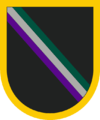
Special Warfare Noncommissioned Officer Academy 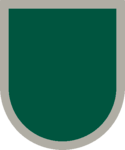
1st Special Forces Command (1st SFC) 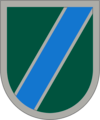
1st SFC's Military Intelligence Battalion 
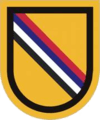
1st Special Forces Group's 39th Special Forces Detachment 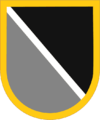
1st Special Warfare Training Group 

3rd Psychological Operations Battalion 
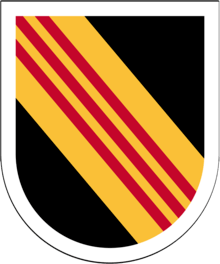
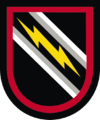
7th Psychological Operations Battalion 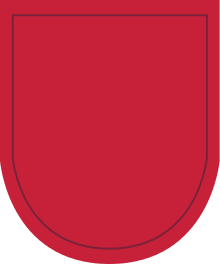

8th Psychological Operations Battalion 
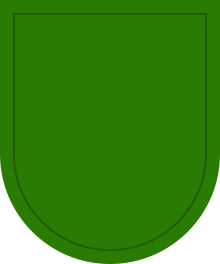
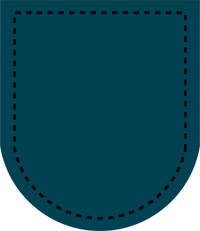
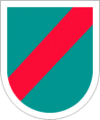

75th Ranger Regiment's HHC/Special Troops, 1st, 2nd, and 3rd Battalions 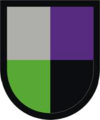

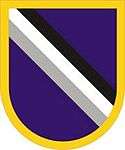
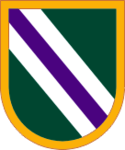
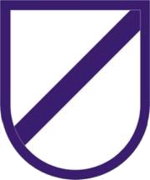


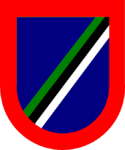

US Air Force
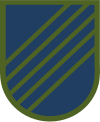
CAA squadrons 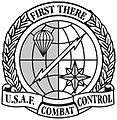
Combat Controller 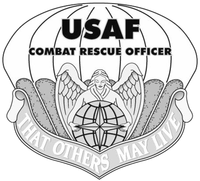
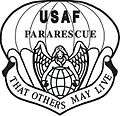
Pararescueman 
Security Forces 
SOWT 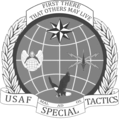

SERE Instructor 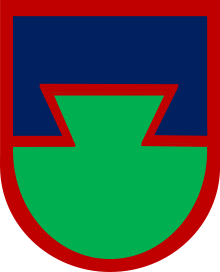
TACP and ALO
See also
References
- 1 2 3 4 Department of the Army Pamphlet 670–1, Uniform and Insignia Guide to the Wear and Appearance of Army Uniforms and Insignia, armypubs.army.mil, dated 25 May 2017, last accessed 4 July 2017
- 1 2 3 4 5 6 Air Force Instruction 36-2903, Dress and Personal Appearance of Air Force Personnel, Department of the Air Force, Air Force e-Publishing, dated 28 May 2015, updated 9 February 2017, last accessed 4 July 2017
- ↑ US Army / US Army Heraldry / Beret Flash and Background Trimmings, The Institute of Heraldry, last accessed 19 November 2016
- 1 2 Quiet Professionals don brown beret, US Air Force Special Operations Command, by Capt Monique Roux, dated 8 January 2018, last accessed 28 April 2018
- ↑ War Eagle Troopers receive Multinational Force and Observers medal, Army.mil, by MAJ Michael Soyka and SGT William A. Tanner, dated 9 May 2016, last accessed 28 April 2018
- ↑ Army contributions to U.N. Liberia mission significant, former force chief says, Army.mil, by Lisa A. Ferdinando, dated 20 September 2013, last accessed 28 April 2018
- ↑ AFSC 13LX Air Liaison Officer, Career Field Education and Training Plan, Department of the Air Force, dated 21 May 2013, last accessed 24 November 2016
- 1 2 The 505th Parachute Infantry Regiment, Unit History and Group Photograph of the 505th PIR, circa 1942, ww2-airborne.us, last accessed 3 July 2018
- 1 2 3 Army Regulation 670-1, Wear and Appearance of Army Uniforms and Insignia Headquarters Department of the Army, dated 22 May 2000, last accessed 3 July 2018
- ↑ Other Insignia not Shoulder Sleeve Insignia, Garrison Cap Insignia of Airborne Units, Second World War, Angelfire.com, by Dr. Howard G. Lanham, dated 2001, last accessed 5 July 2018
- ↑ Army Regulation 670-1, Wear and Appearance of Army Uniforms and Insignia Headquarters Department of the Army, dated 1 July 2002, last accessed 3 July 2018
- 1 2 3 History of the Army Beret, CSA SENDS - THE ARMY BLACK BERET, armyreal.com, last accessed 2 July 2017
- ↑ Special Forces UDT Training at Okinawa & Army Mules ~ 1956 US Army; The Big Picture TV-372, the US Army's "The Big Picture," Pictorial Report No. 29; from Jeff Quitney YouTube Channel, published 3 March 2017, last accessed 19 June 2017
- ↑ Army Special Forces: "Silent Warriors" US Army 1961; The Big Picture TV-518, the US Army's "The Big Picture;" from Jeff Quitney YouTube Channel, published 22 October 2014; last accessed 19 June 2017
- ↑ Green Berets: "Special Forces" 1962 US Army; Henry Fonda; The Big Picture TV-547, the US Army's "The Big Picture;" from Jeff Quitney YouTube Channel, published 19 November 2015; last accessed 19 June 2017
- 1 2 3 4 5 6 7 U.S. Military Beret History, The Balance, US Military Careers, by Rod Powers, updated 8 September 2016, last accessed 24 June 2017
- 1 2 3 "A Short History of the Use of Berets in the U.S. Army". Archived from the original on 24 June 2001.
- ↑ Military Oval or not?, U.S. Militaria Forum, last accessed 28 April 2018
- ↑ Operation Urgent Fury (Grenada) (US Military photo gallary), PBase.com, by Oly Olson, last accessed 4 July 2018
- 1 2 Army Regulation 670–1, Uniform and Insignia Wear and Appearance of Army Uniforms and Insignia, Department of the Army, armypubs.army.mil, dated 25 May 2017, last accessed 4 July 2017
- ↑ "Beret Flashes and Background Trimmings". The US Army Institute of Heraldry. United States Department of the Army. Archived from the original on 2008-08-22. Retrieved 2008-11-15.
- ↑ Insignia of Airborne Units, U.S. Army, Second World War, Airborne Breast Oval Background Trimmings, American Military Patches, Other Insignia and Decorations of World War Two, by Dr. Howard G. Lanham (hosted on angelfire.com], dated 2001, last accessed 24 June 2017
- ↑ 1st SFAB hosts activation ceremony; Heraldry announced, Army.mil, dated 8 February 2018, last accessed 3 July 2018
- ↑ Defensor Fortis: A Brief History of USAF Security And Those Dedicated Few Who Defend The Air Force At The Ground Level (pages 37–38), Universal Publishers Press, by Kali Pinckney, dated 1 November 2003, last accessed 5 July 2018
- ↑ SAC Elite Guard History, The Real History of the Air Force Blue Beret, by Col Ray Balcer (USAF), dated April 2005, last accessed 5 July 2018
- 1 2 3 History of the Security Police Beret, by Safeside Association, last accessed 5 July 2018
- ↑ USAF Security Police Squadrons in Vietnam, usmilitariaforum.com, posted 22 March 2009, last accessed 14 July 2017
- ↑ Combat Search and Rescue in Southeast Asia, National Museum of the US Air Force, dated 18 May 2015, last accessed 17 July 2017
- ↑ JUMP MAN, Oldest active-duty airman jumps from Vietnam era to present day, airman.dodlive.mil, dated 23 December 2013, last accessed 17 July 2017
- ↑ This Gallery Is To Inform You Of The Most Recent Passing Of Those Within Our Brotherhood, I'm So Sorry!; MKP Air Base Thailand, May 1967, sgtmacsbar.com, last accessed 17 July 2017
- ↑ SERE graduates authorized berets, US Air Force, by A1C Nathan Putz (92nd Air Refueling Wing Public Affairs), dated 14 December 2004, last accessed 17 June 2018
- ↑ Earning the gray beret, Keesler Air Force Base public website, dated 10 June 2008, last accessed 18 July 2017
- ↑ Christian Shepherd, 18th Weather Squadron Combat Weatherman, flickr.com, taken 7 October 2007, last accessed 18 July 2017
- ↑ Special Operations Weather Team Recruiting Facebook page, Facebook.com, dated 9 December 2010, last accessed 18 July 2017
- ↑ Quiet Professionals don brown beret, AFSOC, by Capt Monique Roux (919th Special Operations Wing Public Affairs), dated 8 January 2018, last accessed 5 July 2018
